Cristal Fernández-Gómez (email)
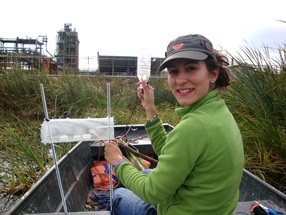
I was born in Narón, A Coruña (Spain) in 1984. In 2007, I
received my
Bachelor Degree on Environmental Sciences from the University of León
(Spain).
Then, in 2008, I moved to Barcelona where I am currently enrolled in the
Analytical Chemistry of the Environment and the Pollution doctoral
program at
the University of Barcelona. I gained a JAE-predoc fellowship from the
CSIC and my research, done at the IDAEA, is focused on the
bioavailability
of mercury in fresh water ecosystems. I have recently been working with
the Diffusive
Gradients in Thin films (DGT) technique for determining mercury species
in
river water. In 2010, during a predoctoral stay at the Chemistry
Department of
Trent University, Peterborough, Ontario (Canada), I broadened my
knowledge on
the DGT technique preparing different gels and carrying out several
laboratory
and field studies. In 2011 I did another research stay at SLU
(University of
Agricultural Sciencies of Sweden) and Umeå University, Umeå (Sweden), to
perform
a study about methylmercury photodegradation in the water phase of a
boreal
lake-wetland gradient.
Jagos Radovic (email)
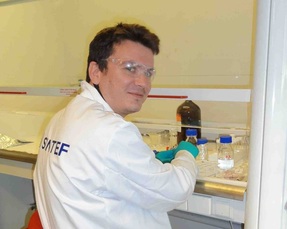
I graduated in
2008 from University of Novi Sad (Serbia) with a degree in Chemistry. In 2009 I
was awarded a grant from Spanish National Council of Research (CSIC) to work on
my Ph.D. thesis at IDAEA-CSIC, Barcelona. My research interest is focused on
petroleum and its environmental impact. I apply the effect-directed (EDA)
approach, which includes chemical characterization of different oil types and
their fractions, oil weathering studies, and bioassays; aiming to assess the
fate and risks of oil spills in the marine environment. This includes
utilization of different, state of the art instrumental techniques, such as GC-qMS,
GCxGC-ToF, HPLC-ToF, LDI-ToF. The thing I like the most about doing research in
Barcelona, is that this city gives you a great opportunity to relax from the
lab work, and enjoy all the social and cultural events it offers.
Wilkinson Lopes Lázaro (email)
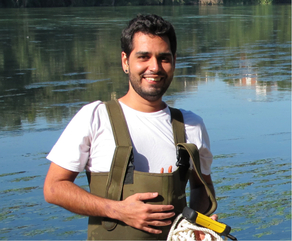
I graduated in Biological Sciences. Master in Environmental Sciences from the University of Mato Grosso (UNEMAT). My research is based on the Upper Paraguay River Basin, one of the most pristine areas of the Pantanal, the world's largest wetland. Acts as a research associate at the Center for Limnology, Biodiversity and Ethnobiology of the Pantanal (Celbe) in the area of ecology of flood systems, ecology/taxonomy of algae and periphyton and environmental contamination by mercury. My current interests are the search for a bioindication method of areas with greater potential for mercury methylation, and protocols based on simple measures of biodiversity in algal periphyton. This work was supported by the UNEMAT, Spanish National Council of Research (IDAEA-CSIC) and the Federal University of Rio de Janeiro (UFRJ)
Susana Barrera (email)
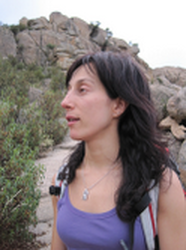
I have a degree in Chemistry from the University of Salamanca (Spain) and developed my research career in various research centers of CSIC (Institute of Physical Chemistry Rocasolano and Biological Research Center) and departments of the University of Salamanca (Department of Biochemistry and Molecular Biology and Department of Physical Chemistry) in the field of protein biophysics. My love for nature, my dedication to environmental protection and the twists and turns of life led me to work in the IDAEA in the field of Environmental Chemistry. Now I spend my time measuring the amount of mercury in Audouin gulls (Larus audouinii) eggs to study pollution in aquatic (Ebro river) and marine (Mediterranean Sea) ecosystems and the entry of this metal in the trophic chain. My new field is really exciting and fun (I love birds!) and surely very important because of the impact that contaminants in the food chain have in health, environmental protection and economy. I hope to contribute with great things to this field and start my PhD soon.
Isabel Nuñez (email)
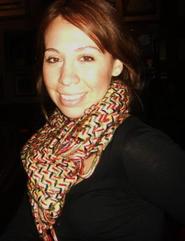
I graduated in Biological Science (5 years-degree) from University of València (Spain). Having worked as a volunteer biologist at the Marine Zoology Department of the Cavanilles Institute of Biodiversity and Evolutionary Biology and as a volunteer researcher at the IDAEA and at the Renewable Marine Resources Department (ICM) of the CSIC, I participated with a team of experts, each in his or her own field, to develop and improve several projects related with the marine and fluvial environment. Currently, I am working at the moment on a project based on the technology of DGT (Diffusive Gradient in Thin Film), my task is to improve this device by increasing the affinity of the resin that accumulates mercury, improving the device by different treatments to avoid the biofilm development, preparing the gels for the DGT and assembling the device,laboratory and field tests and application of the DGTs at field (rivers). I feel very lucky to be part of a team of professionals because every day I am learning and this make me feel alive, I hope to do my best and contribute with my work to fight against pollution in some way.
Riccardo Giaggio (email)
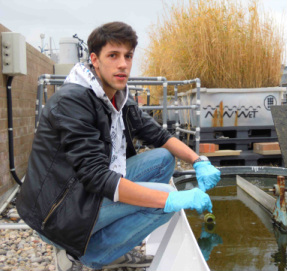
I was born in Venice (Italy) in 1985. In the 2011 I have a first degree in Environmental Science from University Cà Foscari of Venice with a thesis:"Remediation of contaminated sediments and Mapei HPSS treatment ." Before this I received a diploma in Chemistry specialization. During my studies I worked in a company with the process of decontamination soils and sediments from heavy metals where I developed my thesis; before that I worked a short time in a company with a water purification process. Thanks to Lifelong Learning Programme of European Union I'm starting now a new experience with IDAEA team to study the mercury contamination in the Ebro river. This contamination has negative consequences in the different ecosystems of the river. My interest now is how is possible to better the Diffusive Gradients in Thin films (DGT) technique and studying the mercury methylation process.
Former PhD Students
Luis Carrasco (email)
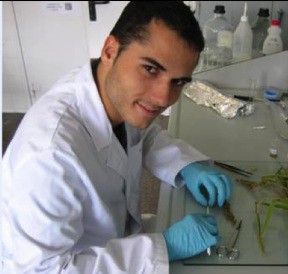
_
Graduated in 2005 from the University of Murcia
with a degree in Chemistry, I defended my PhD degree in July 2011 in
Environmental and Analytical Chemistry at University of Barcelona. All the
experiments performed during the course of the PhD were conducted at
IDAEA-CSIC, Barcelona. While at CSIC, my work was focused on the biogeochemical
processes affecting the bioavailability, bioaccumulation and biomagnification
patterns of Hg throughout trophic chains. In addition, I developed and
validated a new methodology for the determination of organomercury species in
different biota matrices. My experience in the final fate of Hg in aquatic
ecosystems was completed in three short stays in American and European
Universities, namely: Florida International University (USA), University of
Connecticut/Darmouth College (USA) and Univesita degli Studi di Trieste
(Italy). My work was supported by the National Research Council of Spain
(CSIC), BBVA Foundation, Spanish Ministry of Environment and Water Agency of
Catalonia (ACA).
Currently, I continue with my research activities on Hg pollution in aquatic systems as Analytical Chemist-Research Scientist in the Marine Environmental Studies Laboratory (International Atomic Energy Agency), located in Monaco.
http://www-naweb.iaea.org/naml/
Currently, I continue with my research activities on Hg pollution in aquatic systems as Analytical Chemist-Research Scientist in the Marine Environmental Studies Laboratory (International Atomic Energy Agency), located in Monaco.
http://www-naweb.iaea.org/naml/
